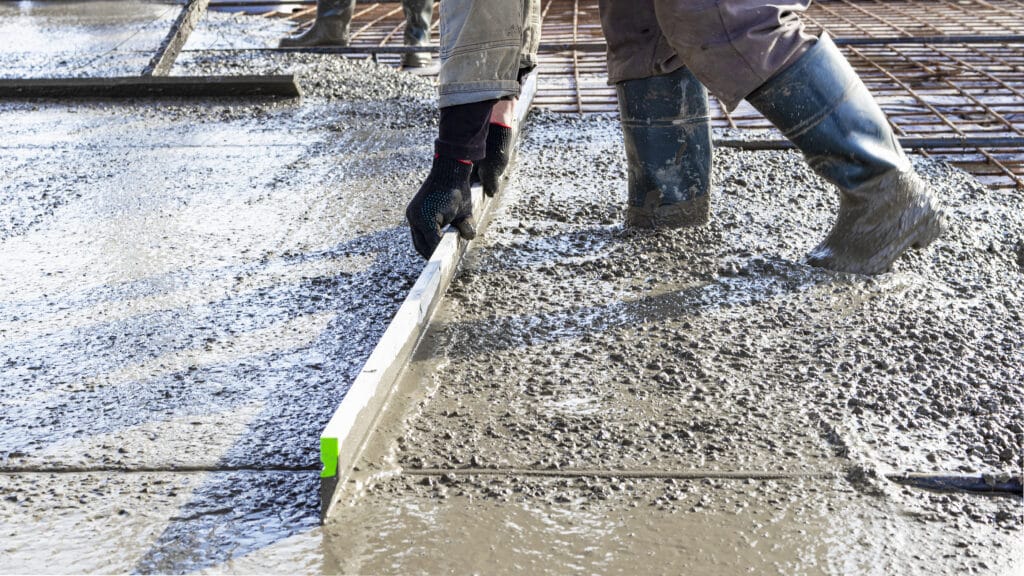Insulated slabs have become the standard in modern construction due to their ability to prevent heat loss or gain, while providing services such as plumbing.
Preparing the Site
Site preparation is an integral component of concrete slab construction. When executed improperly, sub-grade failure can occur, leading to costly repairs and structural issues, reducing its lifespan significantly and leading to costly repairs later.
Site preparation involves digging the area where the concrete slab will be installed, adding a subbase composed of gravel and sand then compacting and tamping it for an exceptionally strong, secure and stable base to pour onto. Furthermore, proper drainage of water from beneath a slab must also be ensured as this could lead to stress cracks forming underneath its surface.
Settlement and heaving can cause cracks to form beneath concrete, increasing tripping hazards and making it more susceptible to freeze-thaw cycles and chemical exposure. Proper drainage and moisture management can alleviate these issues; perforated pipes or French drains may need to be installed if necessary to divert excess water away from the site, then formwork must be placed over its base so the concrete sets evenly before setting is completed.
A concrete slabs Melbourne serves as the floor of buildings and bridges, bearing both dead loads and live loads before transmitting them up the structure above to its walls and columns.
Mixing the Concrete
Your concrete mix for your slab should be carefully mixed; free from large clumps that do not break apart when squeezed between your hands, it should flow easily when stirred with a shovel, and contain sufficient water content as a dry mix may not form solid structures when poured.
Once you’ve discovered your ideal mix, it’s time to get mixing! Create a well in the middle of your dry concrete mix, slowly add water, pouring a small amount at a time until everything looks evenly mixed when flattened with your shovel. Keep adding water until your finished concrete has an evenly damp, sandy consistency when flattened – when finished adding additional quantities you should keep mixing thoroughly and until its surface looks smooth when flattened by using your shovel.
Traditional concrete has a high embodied energy footprint, but there are alternatives with lower environmental impact, like hempcrete – using industrial hemp fibres mixed with lime-based binder to store carbon dioxide during its lifespan. Eco-comparison websites can assist in selecting options with reduced embodied energy.
Pouring the Concrete
Once all dirt work and grading have been completed, it’s time to pour concrete. Depending on the type of slab being constructed it’s essential that enough formwork be utilized based on its design; forms may include wood, plastic or steel pieces with steel being more commonly utilized on commercial jobs as it saves money.
If the concrete is being placed outside, it’s essential that it is done at cooler times of the day to reduce chances of it setting too quickly and weakening over time. Extreme heat could cause it to set too quickly resulting in its premature setting and ultimately weakening strength over time.
Consideration should also be given to the environmental impacts of your concrete slab project. Traditional concrete can have a high embodied energy consumption rate; opting for recycled aggregates or autoclaved aerated concrete may help minimize construction energy use. Concrete also releases significant amounts of carbon dioxide during its production phase; opting for low-carbon cement can minimize emissions into the air while simultaneously decreasing delivery numbers to your site.
Finishing the Slab
Once concrete has been poured, it should be levelled and smoothed using a concrete finishing tool with a handle for best results. Fresnoing should never occur while it remains wet as this could cause air bubbles or blisters which weaken the surface plane leading to delamination down the line.
Once troweled, colloidal silica admixtures can significantly enhance concrete surface quality and performance. They work by lubricating power trowels to increase speed while decreasing trowel marks and gouges; additionally they absorb water vapor while slowing evaporation from mix water in concrete to promote curing time as well as decrease curling.
Controlling access to the slab during its placing/curing process is a critical element of any slab protection plan. To facilitate smooth construction operations, it’s vital that a protocol for calling off or altering placement schedules, maintaining communication among contractors, and providing adequate lighting in areas where work takes place is established and put into action.
